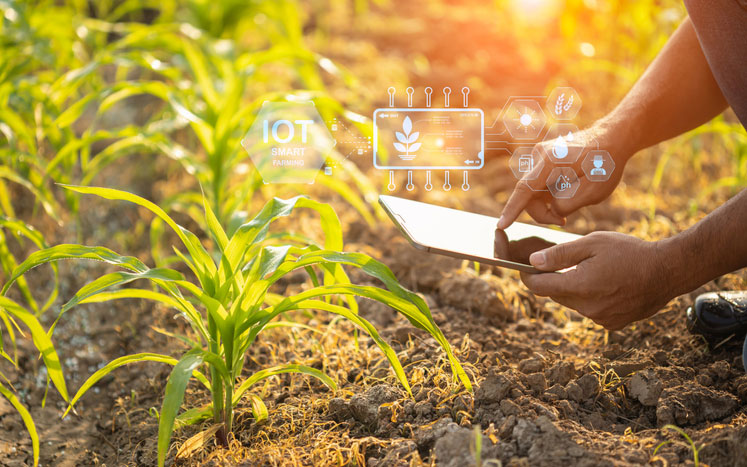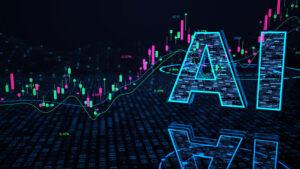Written by Rebecca Turley

Artificial intelligence is proving to be a major disruptor in nearly every industry, revolutionizing processes, transforming practices, solving problems, and reimagining solutions to some of the most pressing issues in business and industry. In South Dakota, artificial intelligence is being used to create a more abundant and sustainable agricultural ecosystem that’s ensuring the state’s prosperity for generations to come.
South Dakota’s agriculture system serves as the state’s economic foundation and top industry, contributing about $32 billion to the economy – or 30 percent of the state’s total economic output. The state is home to more than 31,000 farm and ranch families (more than 98 percent of all farms in the state are family owned and operated), and over 115,000 jobs are tied to the agriculture industry here. South Dakota is where you’ll find major food processing and dairy and pork operations and the highest beef cattle inventory in the nation.
Equally important, South Dakota is also where you’ll find plenty of advances in value-added agriculture – the intersection of agricultural science and innovation. Valued-added ag companies here totaled about 188 in 2021 and accounted for more than 12,000 jobs. Multinationals like Bel Brands, Agropur, Royal Canine, and AG Processing Inc. have long been a part of South Dakota’s agricultural landscape.
The integration of artificial intelligence into South Dakota’s agricultural industry is a natural evolution, with the state welcoming in AI-fueled platforms and tools that have the power to leverage technology and increase productivity on existing farmland.





And it couldn’t have come at a better time. A multitude of obstacles continue to challenge modern farming – labor shortages, climate change, resource scarcity, and land limitations, to name just a few. AI solutions designed to improve efficiency, capitalize on agricultural output, and improve everything from quality control to compliance practices are forever altering the agricultural environment and revolutionizing farming practices.
Thanks to AI, today’s farmers can make sound, data-based decisions about everything from forecast pricing to optimal times to sow and harvest. Through AI, they’re inspecting soil health; detecting and eradicating diseases pests; monitoring weather conditions; examining livestock health; implementing automated irrigation, fertilization, and farming practices; and much, much more.
Companies like Raven Industries, a major Sioux City-based ag technology company, are creating AI tools that are changing the face of agriculture, both in the state and throughout the country. For example, Raven, a leader in autonomous agricultural equipment, recently created an AI-powered platform called OMNiDRIVE, which transforms existing tractors into driverless machines. OMNiDRIVE allows unmanned tractors to communicate with their controllers via a wireless system. The system knows where the field has been harvested, preventing unharvested crops from being run over. Its AI technology also recognizes people, animals, and other obstructions to maintain a safe environment, free of dangerous obstacles.
Of course, research and development activity is driving AI solutions in agriculture in South Dakota at record speed. For example, in January 2022, Ecdysis, a South Dakota-based nonprofit organization, announced a massive data collection project to advance study in regenerative agriculture. Through their work, which is aimed at increasing biodiversity and farmers’ bottom lines, Ecdysis will examine the effectiveness of regenerative practices, such as diversifying crops, grazing livestock on harvested fields, and reducing pesticide use. To pull off a project of this size, which includes examining soil microbiology, water quality, and insects, plants, and birds, they’ll use AI in new and exciting ways. For example, they’ll harness the power of AI to identify the thousands of types of insects collected in fields.
It’s an exciting time to become part of South Dakota’s growing AI field, whether your interests are in the state’s agricultural industry or in one of its many other industries, such as manufacturing or bioscience. But before you can become a valuable addition to the interdisciplinary AI field, you’ll need a solid foundation that only a degree or certificate program can provide. Fortunately, there’s a growing number of undergraduate and graduate degrees in artificial intelligence that are uniquely designed to position you for success.
Cracking the Stock Market: SDSU Researchers Study AI’s Predictive Power
 Despite all the market research analysts and stock traders who devote their careers to understanding the behavior of the stock market, there’s still no surefire way to predict where it’s headed. Bold predictions and even measured forecasting often fall short, and market dynamics have a habit of leaving even the most confident analysts and traders scratching their heads.
Despite all the market research analysts and stock traders who devote their careers to understanding the behavior of the stock market, there’s still no surefire way to predict where it’s headed. Bold predictions and even measured forecasting often fall short, and market dynamics have a habit of leaving even the most confident analysts and traders scratching their heads.
But two researchers in South Dakota State University’s (SDSU) Department of Electrical Engineering and Computer Science developed an AI-powered model that may make stock market predictions a heck of a lot more accurate. Through artificial modeling, their deep neural network tool they call “ALERTA-Net” is designed to bring useful insights even during times of high volatility.
The research team, which also included faculty members from Virgina Tech and Texas A&M Corpus Christi, first noted flaws in current forecasting methods based on both technical analysis and fundamentals. Technical analysis may overlook stock market changes due to unexpected events, while fundamental analysis often fails to consider the relationship between the broader economy and the stock market. These flaws, of course, make them vulnerable to missing key indicators.
ALERTA-Net considers three unique types of data when making predictions: (1) macroeconomic, (2) search engine, and (3) social media – the first AI tool of its kind to do so. Pulling not just from historical data but also from social media and search engine data, the team hopes to be able to predict stock market trends with sustained accuracy.
The research team tested ALERTA-Net by choosing a few dozen blue-chip stocks and gathering information on the stocks from a variety of different sources (social media, Yahoo Finance, Twitter (X), and the Federal Reserve). After ALERTA-Net analyzed the information, the team found that it performed better than DP-LSTM, a renowned stock market prediction network.
AI Jobs in South Dakota
According to CompTIA’s 2023 State of the Tech Workforce, tech employment in South Dakota totaled 15,855 as of 2022 – that’s about 3.3 percent of the state’s overall workforce.
Between 2021 and 2022, the number of tech jobs in South Dakota increased by 3 percent, which represents 469 jobs. CompTIA projects that the number of tech jobs here will increase again by 3.6 percent between 2022 and 2023, which represents another 564 jobs.
Artificial Intelligence Jobs in Pierre and Sioux Falls
With titles like AI scientist, machine learning engineer, software architect, and research analyst, jobs in artificial intelligence are plentiful and growing in numbers every day, both in South Dakota and across the nation.
- Lead AI product managers at Wolters Kluwer in Pierre oversee overall product management, strategic vision and focus, and the execution of growth plans for technology products. They perform research and identify enhancements for current features and functionality and work alongside engineers, designers, suppliers, and customers to develop online/digital media product requirements and specifications.
- Senior technical consultants in conversational AI delivery with Genesys Cloud Services in Sioux Falls are responsible for software development and architecture, integration consulting, agile leadership, team and project leading, customer training, team education, and more. They work closely with customers, sales teams, and internal teams and lead major self-service projects.
- Senior AI cloud sales specialists at Oracle in Pierre identify and close business within the company’s AI vertical.
AI Companies in Brookings, Sioux Falls, and Rapid City
Artificial intelligence companies are rising in numbers, both in South Dakota and across the country as more companies begin to realize AI’s ability to transform how and where they do business, the scope of their business and their bottom line. For example, in Brookings, Query.Ai helps companies protect themselves from cybersecurity threats. Their AI-powered platform allows companies to quickly access the data across all channels through a single search and control how and where they store their data. And in Sioux Falls, Solarity is using AI to interpret clinical data in healthcare. The Solarity platform helps healthcare institutions make sense of their clinical data to create accurate, consistent, easy-to-access medical records.
South Dakota’s talent pool is gaining momentum, thanks to esteemed research universities like Dakota State University. Their AI Lab is focused on conducting cutting-edge research and searching for ways to apply AI to address emerging challenges in such areas as data security and privacy.
The Mount Rushmore State is also where you’ll find outstanding support for R&D activities and startups in AI. For example, Elevate Rapid City was created in 2019 as a merger between the Rapid City Chamber of Commerce, the Economic Development Partnership, and the Economic Development Foundation. This initiative boasts resources, tools, and financial assistance to help small business efforts in the Black Hills region. Their work also includes business retention and expansion, public policy, marketing, and events. In 2021, it opened its new Accelerator Building to help tech startups gain their footing. Located in downtown Rapid City, this 40,000-square-foot building is located near the South Dakota School of Mines & Technology, a premier science and engineering university.
And in Sioux Falls, Startup Sioux Falls provides outstanding resources to help new businesses network, launch, and grow their ventures.
AI Salary in South Dakota
According to the Bureau of Labor Statistics (BLS), AI professionals, who fall under the broader BLS category of computer and information research scientists, earned a median salary of $136,620 as of May 2022. Those with little experience earned about $99,410 during this time, while those with extensive experience and likely a graduate-level education earned about $232,010.
Artificial Intelligence and Machine Learning Master’s Degree and Certificate Courses in South Dakota and Online
AI degrees and certificate programs, both at the undergraduate and graduate levels, provide aspiring and practicing AI engineers and scientists with the formal education needed to embark upon a career in this interdisciplinary field or advance within it. Many colleges and universities now offer AI degree and certificate programs in fully online formats to accommodate the needs of busy, working adults or those with geographical limitations.
AI bachelor’s degree programs provide a comprehensive foundation in the field and are usually offered as part of a computer science or engineering program. These math-focused programs include study in linear algebra, calculus, and probability alongside an AI core that features both theory and practical applications.
AI master’s degrees and certificate programs offer a more in-depth examination of the field of AI and its subfields. Reflecting the interdisciplinary nature of this field, these programs may be offered within schools of engineering, computer science, arts and sciences, and even philosophy. While most programs offer some type of opportunity to specialize in areas like robotics, machine learning, computer vision, or big data, many allow students to create personalized programs that include choosing electives across different schools and departments.
2022 US Bureau of Labor Statistics salary figures for computer information and research scientists. Job growth projections from the US Department of Labor-sponsored resource, CareerOneStop. Figures are based on state data, not school-specific information. Conditions in your area may vary. Data accessed February 2024.






